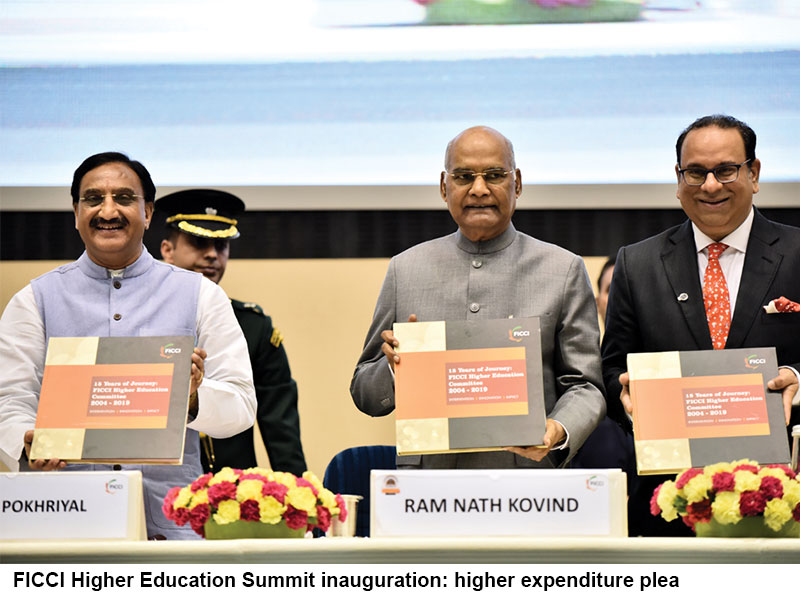
Formulation of the National Education Policy (NEP) 2019 is now in its final phase even as a 55-page leaked draft is ubiquitous on social media. All indications are that the final NEP will be formally released by the end of the year.
The official NEP 2019 is likely to accept 80 percent of the recommendations made in the 484-page draft NEP report of the Kasturirangan Committee released on May 31 for public comment and suggestions. The window for public comment was kept open until August 15 during which time more than 200,000 comments and recommendations (including detailed recommendations made in two cover stories, July 2019 and November 2019, by EducationWorld) having been received by the Union human resource development ministry. NEP 2019 has been in the works for almost five years since 2015 and will be the outcome of two drafting committees, the first chaired by former Union cabinet secretary, TSR Subramanian, and the second by former ISRO chairman, Dr. Krishnaswamy Kasturirangan.
What’s clear from the leaked NEP is that the Kasturirangan (KR) Committee’s recommendation to establish a National Commission for Education or Rashtriya Shiksha Aayog (RSA) chaired by the prime minister has been rejected. Instead of deference to criticism that it would further centralise education, which was moved from the state to the concurrent jurisdiction list in the 1980s, NEP 2019 in its final form will declare that RSA will be chaired by the Union HRD minister.
However, the leaked NEP 2019 report is vague on the critical issue of greater investment in education. Way back in 1966, the Kothari Commission had recommended allocation of 6 percent of GDP for education, which has been ignored by every government at the Centre and in the states for five decades with disastrous consequences for post-independence India’s polity and economy. Mysteriously, instead of endorsing this matrix, the KR Committee recommended that the annual national outlay for education should be increased from the current 11-12 percent to 20 percent of public expenditure over a period of ten years.
Currently, the annual expenditure (Centre plus states) is estimated at 3.5 percent of GDP. Doubling this in ten years is too gradual an approach. Your editors have consistently argued for immediate doubling of the outlay and have repeatedly presented a comprehensive schema for one-time investment of Rs.6.37 lakh crore for a massive infrastructure boost to the public education system (see EW March 2019, p.42).
In a valedictory address to the FICCI Higher Education Summit convened in Delhi on November 28, Kasturirangan reiterated that the KR committee’s modest recommendation is feasible. “Implementation of NEP 2019 will be a challenge but certainly it is doable. But current government spending of 11-12 percent of public expenditure on education has to rise to 20 percent over a 10-year period. It must be made possible,” he said.
Speaking at the same event, Dr. G. Vishwanathan, founder-chancellor of the top-ranked Vellore Institute of Technology and Vellore Medical College and former president of the Delhi-based Education Promotion Society of India (EPSI), also called for greater investment in education. “Over 600,000 students who write NEET annually want to practice medicine. Against this, the number of seats in medical colleges countrywide is a mere 60,000.
Therefore, our aspiring doctors study in medical colleges in Uzbekistan, China and even Bangladesh. We are not only failing to develop our human capital but exporting it worldwide. Of all international students, 77 percent are from Asia. If we create education infrastructure we’ll not only retain our own students here but get a good number from abroad as well,” said Vishwanathan.
In the national capital, among intelligent monitors of the country’s under-funded, hollow education system ruined by decades of ill-advised populist government micro-management, there’s an emerging consensus that the efficacy of NEP 2019 will depend on whether the BJP-led NDA 2.0 government at the Centre will accept the KR Committee’s recommendation to double the annual national outlay for education to 20 percent of public expenditure (or 7 percent of GDP) in ten years. But with GDP growth in 2019-20 having plunged to 4.5 percent in the September-December quarter, and at best likely to be 6 percent even as the real fiscal deficit is likely to be nearer 5 percent than the budgeted 3.3 percent of GDP, a substantially larger outlay for education is unlikely in 2020-21.
More likely, it will be promised but not met. Developing the country’s abundant human resource is likely to remain a low priority of the Central and state governments in the foreseeable future.
Autar Nehru (Delhi)


























